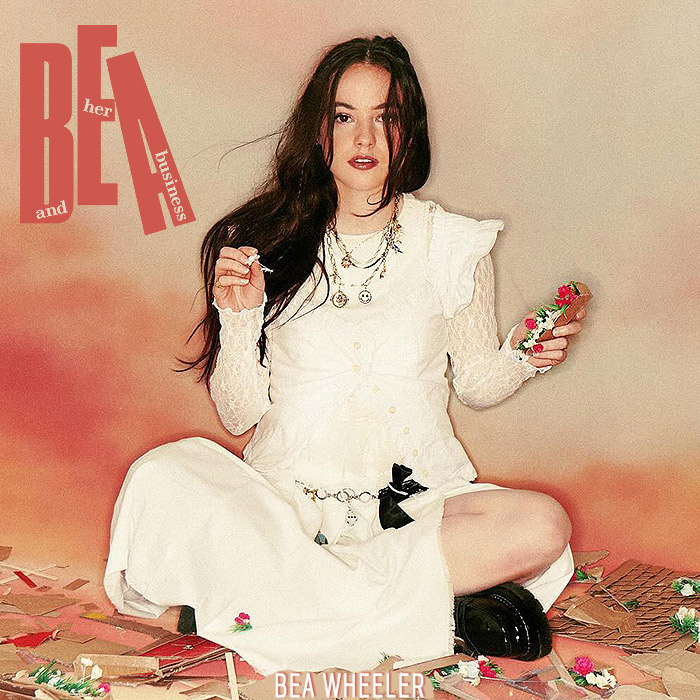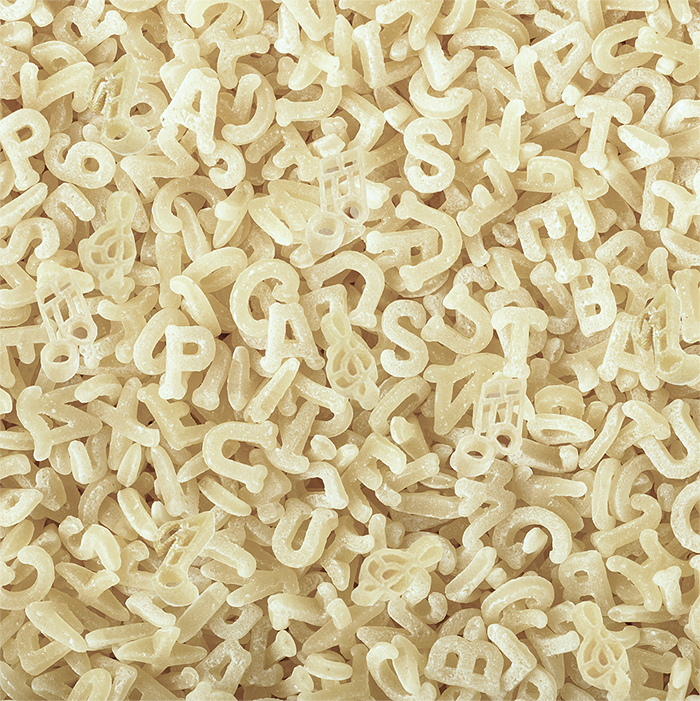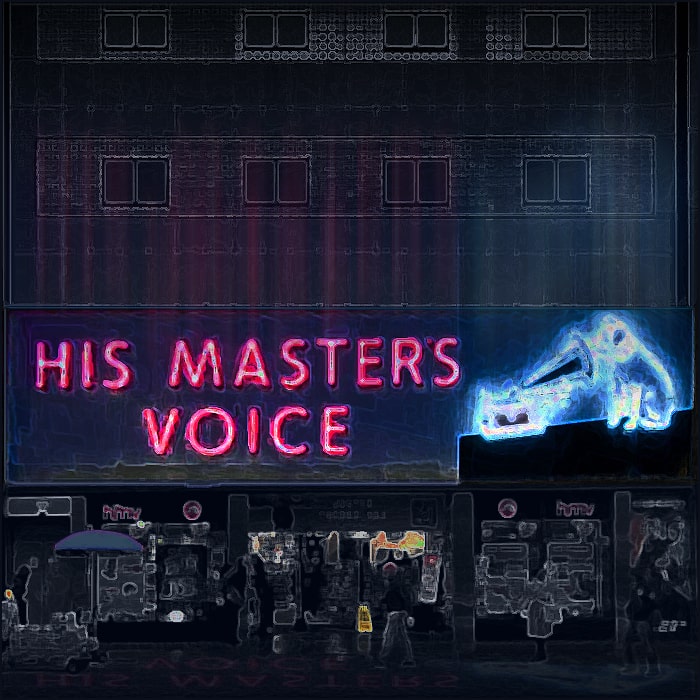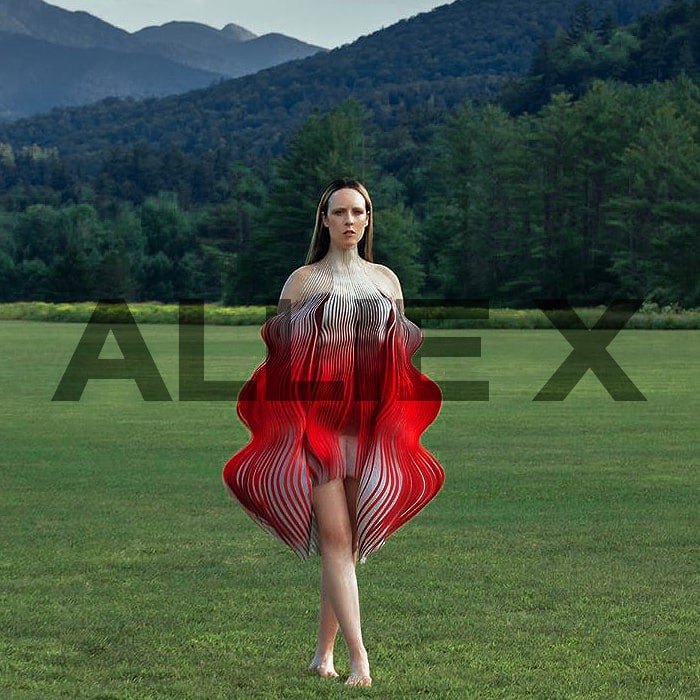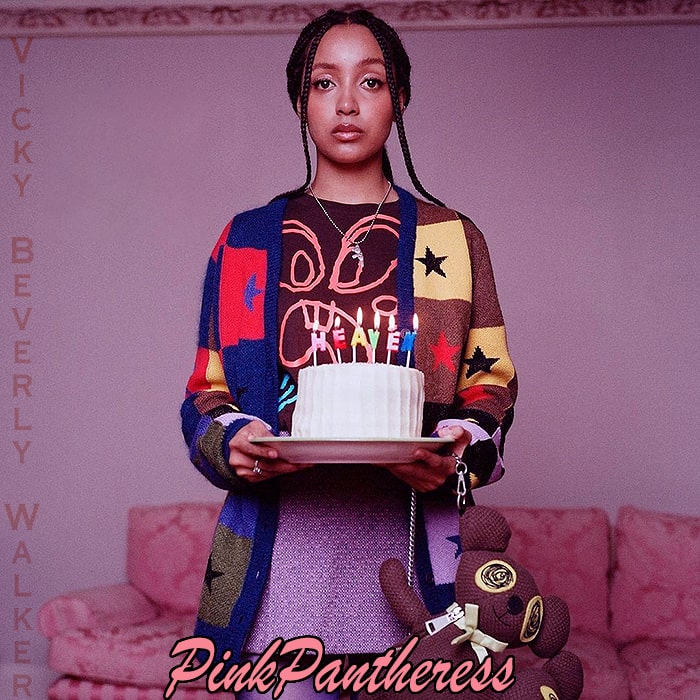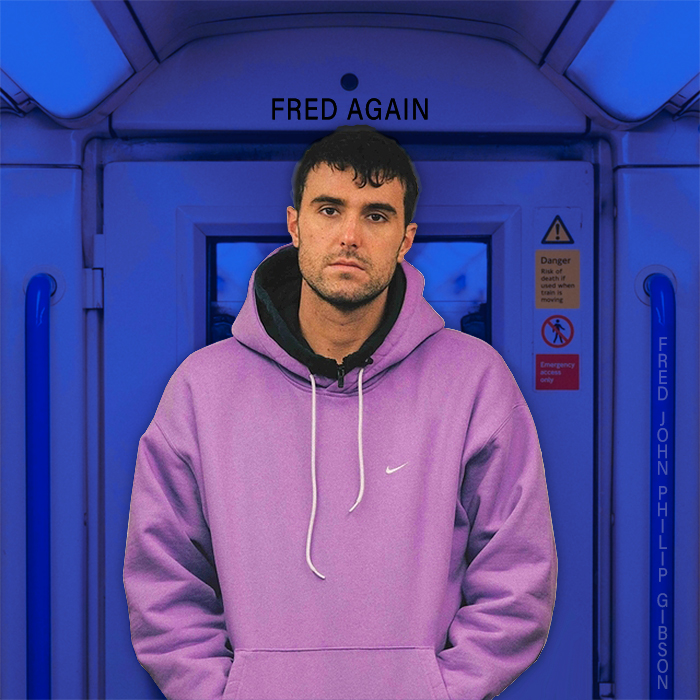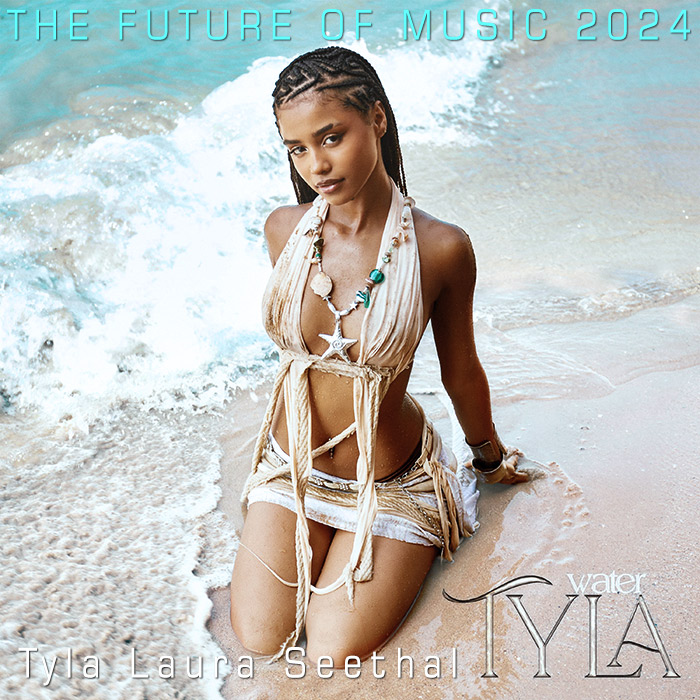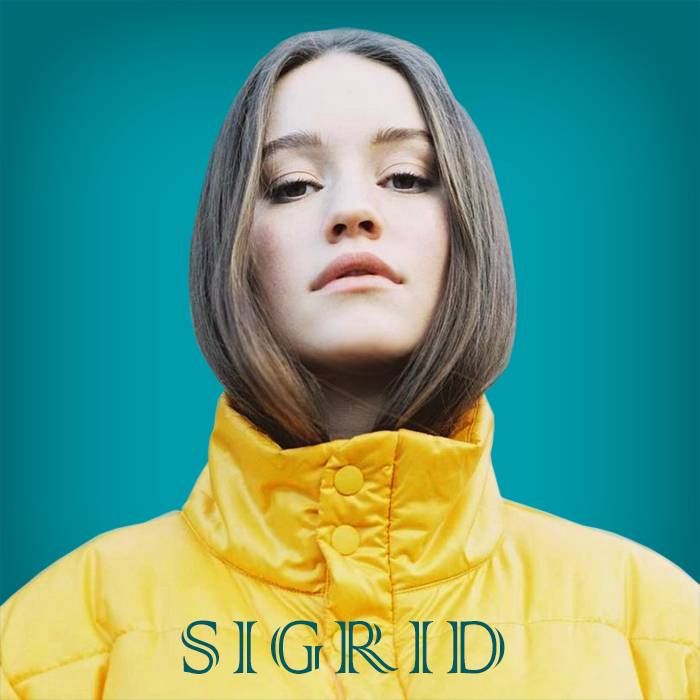The Future of Music Online 2010
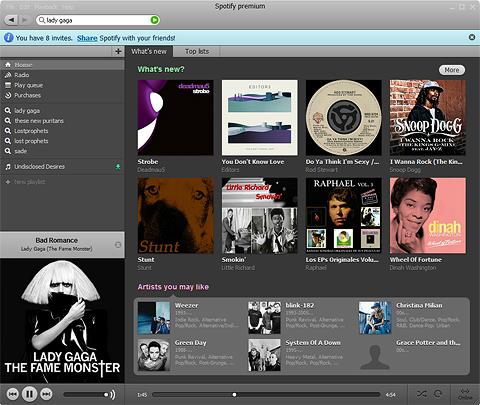
The Future of Music Retail - Introduction
2 Significant music-related things happened for me in 2009. Firstly, I signed up for the Premium version of streaming service - Spotify; secondly, I finally succumbed to Apple and bought into the iPhone smartphone. I have several discarded MP3 players and iPods which have somewhat fallen into disuse as I found it a burden to carry around so many devices. The fact that the iPhone comes with iTunes / iPod functionality means that I now always have a subset of my music collection with me (circa 300 albums). However! Neither Spotify or iTunes combined come anywhere close to meeting my broad musical tastes - they just don’t quite cover the range. Moreover, I am still quite captivated by solid formats; I like the ownership of something tangible, the smell of freshly printed vinyl sleeves, the artwork and cover notes. So I end up syncing playlists on Spotify for offline use, buying some music from iTunes, but still largely buying CDs for albums and Vinyl 12"s for singles. In the meantime, the Internet has evolved a vast array of Music-related services, as we will see:
Solid Format Online Music Retail
If you are buying traditional music formats online, you are most likely buying from either Amazon or Play.com or HMV or even Tower Records. All have excellent retail catalogue functionality, with Amazon setting the standard for enhanced features, related recommendations and notifications. The holy grail for Online Retail really is automated cross-selling - that is to say - encouraging discovery of like artists and music by way of recommendations and notifications. Most sites now feature ’Customers who bought / liked this also bought / liked this ...’. You are encouraged to set and refine your preferences, with which the site builds a profile to send you notifications for related offers. I use a number of dance specialists sites, including Juno, Phonica, Boomkat, HTFR, Decks.de and HHV.de; niche music sites Rough Trade, Discovery Records, Piccadilly Records, Music Non Stop and Norman Records; moreover, I also use specialist music marketplaces (think of them as dedicated eBay-like retail platforms) - Discogs and GEMM. These are my key resources for buying music, and because of my broad tastes, I often end up using upwards of 20 different retail sites which are based all over Europe, America and even Japan.
Music Downloads and Streaming
The daddy of Music downloads is of course Napster which is still around, but has long since been overtaken by the behemoth that iTunes has now become. For straigtforward downloads, iTunes now has stiff competition from Amazon, there are a myriad of other MP3 and Flac format download sites, including specialists like Beatport and Boomkat - in fact a large number of music retailers now have download versions also available.
The most significant step change in this arena though was when Swedish originated Spotify first enabled its service for the UK market in February 2009. Since then, there have been a slew of competitors in this marketplace, MySpace Music is the only really international service; each service is limited to one or a few territories; the US has Lala, Pandora, Rhapsody and Grooveshark, and the UK has We7 and Sky Songs; even tiny Iceland has its own growing service from local provider Gogoyoko. The difficulty at the moment is in establising cross-border / International licence from the record companies, who are all secretly trying to develop their own systems. The signficance of this marketplace has been brought home by the purchase by Apple of Lala in late 2009 - obviously with a view to evolve and streamline its iTunes service to be more in line with the clever model Spotify pioneered. This thin-client music subscription service is definitely the way to go - it has to work with ’offline-syncing’ though - so that users of the service don’t need to be permanently connected to the internet; although with the growth of Wi-Fi hotspots, it is likey that this is how global networking will evolve, and thus - with more connected Wi-Fi hubs, bandwidth outages occur far less frequently. As a keen user of browser-based Google Apps, I am sure that this is the ideal way to go - to have your software shared and synced, and accessible through any browser - anywhere in the world, this is something that iTunes and Spotify (being desktop apps) don’t do quite well enough at the moment.
The Key Role of Music Video
As Buggles and Michael Jackson first proved , video definitely killed the radio star, and as has been substantiated several times since, a visually dynamic music video can significantly enhance the success rate for a particular artist, single or album. In fact, over the years, a number of fairly middle-of-the-road tracks have surpassed all rational expectations on the back of impressive pop promo videos. The earliest dynamics of the promotional force of video were in Movie sountracks as well as advertising soundtracks, as was exemplified by how many number 1 hits, Levi’s was able to scrore on the back of a successful 10 years’ worth of ad campaigning. Grease and Saturday Night Fever are record-breaking Soundtrack albums which have much to do with the success of the video material that they accompanied. Simon Cowell and Walt Disney are the modern masters of pop promotion - plundering commercial television with a slew of pop promotional programs like Pop Idol, Got Talent, X-Factor, Hannah Montana and High School Musical. There is a newer and even more powerful challenger on the block - ’Glee’ which releases iTunes -downloadable tracks of the program music - in advance of the broadcast. The success of Glee’s iTunes campaigns is unprecedented, and the series music compilation albums are performing extremely well; there are also plans to release totally original song material, rather than the covers, mashups and re-interpretations that have occurred until now; Simon must be running scared now, as it’s more likely that Glee will capture the Christmas number one rather than a washed-out, re-hashed middle-of-the-road cover by a totally inexperienced and essentially characterless artist.
In terms of the generic Music Video ’marketplace’ YouTube is still king - with by far and away the largest collection of musical videos online. Not wishing to rest on their laurels, they have recently launched the ’YouTube Music Discovery Project and Playlist Creation Tool’ - this allows you to search for a favourite artist - and YouTube auomatically pulls in all their videos and creates a playlist including relevant related artists’ video output. Tabs on the page allow you to access all of the Artist’s Music Videos, arrange and create a ’Mix Tape’ and view Related Artists. This system works quite well with mainstream artists, but totally fails with some of my selections - try for instance searching for ’Chew Lips’, ’Golden Filter’ or ’Ou Est Le Swimming Pool’ - it is obvious that there is some manual input and manipulation required, as all the referenced artists have plenty of video content on that site - you can view it in Community Media on this Comrz site if you wish.
YouTube is by no means the only significant Music Video resource, competing Video sharing platforms Vimeo, Metacafe and Dailymotion also have growing music video libraries, as do MTV and MySpace; more significantly though is the more recent introduction of a slew of specialist online Music TV services like - Muzu.tv, Music.com and Muvids.com. All these video sharing portals offer video embedding facilities to some degree - and you are starting to see a slight broadening of original sources of embedded content. Even though video embedding has been proven to be fantastically succesful in music promotion, an example of this is cited in my recent blog ’The fantastic promotional benefits of enabling video embedding’, most of the major record companies have a policy of disabling embedding. For brand new artists like Nneka, I don’t see how this makes any sense. By all means you can disable embedding on a Hi-Def format, but allow the Internet community at large to embed a standard resolution version for promotional purposes - you never know where someone is going to hear the track for the first time; and its far better to have a reasonable quality ’offical version’ for embedding than have users embed some ropey illegal version - which will diminish the appeal of artist and output.
New Formats
A significant problem for commercial music is the various ’Darknet’ resources - various Music Blogs and ’Torrent’ download sites which allow users to illegally download music for free. As I have mentioned in previous posts, instantly downloadable music files - with just a title and graphic attached have become somewhat disposable and low (or ’no’) value for a number of consumers. To counter this, and bring more of the experience of solid format music, several companies have set about creating evolutions of the MP3 format - with a number of additional clever features and functions attached. Some of you might be familiar with the ’Opendisc’ technology which provides additional and ehanced content to support the music CD - in the form of additional complementary videos, interviews, cover and production notes, tour calendars and extra tracks. In the same way, Norwegian Dagfinn Bach has evolved the MusicDNA format which assigns 14 descriptors of semantic audio data - enabling the pulling in of related music, music formats and music information which leads to ’smart content’ and the ability to make recommendations and notifications based on a particularl music file’s DNA - this means for instance that much like with the new YouTube playlist function, MusicDNA can pull in all related albums, tracks, photos, videos, blogs and other relevant resources, and also make recommendations of similar tracks and artists. As yet, no major label has taken up this format, and there are a number of other formats in development, including CMX and MXP4 which aim to do similar things. There are already a number of significant online musical resources - such as All Music, Discogs, MusicBrainz, Music-Map, Metacritic and Last.fm. These new music file formats aim to combine all the intelligence of all possible music resources, within the track information itself - by way of an extended meta data set.
The Convergence of Music
In recent times, it has become more common for artists to accompany each music track with some sort of video content or pop promo. Many artist sites have lyrics libraries, ’making-of’ videos, blogs, forums, photo galleries etc. and some have enormous resources dedicated to every aspect of the artist’s artistry; the best example of this is by far is Bjork.com whose enormous wealth of resources is really quite breathtaking (Just check out the Wanderlust microsite as an example). The future evolution of online music will see sound and video integrally entwined with multiple enhanced resources - pulling in tour diaries and special offers, and linking all to a system of intelligent prompts, recommendations and notifications - this is the essence of the future of online music retail - which I believe will result in a format convergence where there will eventually cease to be a split between audio and video - eventually there will be one supreme format which combines everything and will work slightly differently on a myriad of different playback devices. The final format will consist of editable components which will allow users to interact with the source material in unpredented ways - and even make their own edits and remixes - both visual and auditory, all along the way being able to contribute comments and notes in the manner of live, evolving wikipedia entries. Shows like ’Glee’ emphasize the perfect evolution of the music format - from the initial exposure, through to digital and solid format mediums, tours, shows, related events, resources and of course infinite retail possibilities.
Albums I Discovered / Acquired / Liked in 2009 - particular favourites marked with asterisks *****
- 5 Years of Hyperdub (Various) *****
- Amanda Blank - I Love You
- Animal Collective - Merriweather Post Pavilion
- Annie - Don’t Stop *****
- Barcelona - Absolutes
- Bat for Lashes - Two Suns *****
- Black Eyed Peas - The E.N.D
- Bliss - No One Built This Moment
- Bloodgroup - Dry Land *****
- Bloodgroup - Sticky Situation
- Cato Canari - Out of Tune *****
- Dada Life - Just Do The Dada
- Damian Lazarus - Smoke The Monster Out
- Daniel Wang Presents - The Best Of Balihu 1993-2008
- Darren Tate - Horizons 02
- Desire - II
- Disa - Disa
- Diskjokke - Dislocated Remixes
- Echaskech - Shatterproof
- Editors - In This Light and on This Evening
- Empire of the Sun - Walking on a Dream *****
- Felix Da Housecat - He Was King
- Fever Ray - Fever Ray *****
- Filipsson & Lindblad - Splendor in the grass
- FM Belfast - How to make friends
- Fontan - Winterhwila
- Freemasons - Shakedown 2
- Fuck Buttons - Tarot Sport
- Hjaltalin - Sleepdrunk Seasons
- Hjaltalin - Terminal
- Hospital Records - Sick Music (Various)
- Jori Hulkkonen - Man from Earth
- King Midas Sound - Wating for You
- KZA - Dig and Edit
- Lady Gaga - The Fame / Fame Monster *****
- La Roux - La Roux
- Lindstrom & Christabelle - Real Life Is No Cool
- Lisa Ekdahl - Give me that slow knowing smile *****
- Little Boots - Hands *****
- Little Dragon - Machine Dreams
- Madeleine Peyroux - Bare Bones
- Major Lazer - Guns Don’t Kill People ...Lazers Do
- Marsheaux - Lumineux Noir *****
- Meanderthals - Desirelines
- Melody Gardot - My One and Only Thrill *****
- Miike Snow - Miike Snow *****
- Moby - Wait for Me *****
- Moderat - Moderat *****
- Monolake - Silence
- Mungolian Jetset - We gave it all away *****
- Muse - The Resistance *****
- Music Go Music - Expressions *****
- Nadia Ali - Embers
- Olafur Arnalds - Found Songs
- Passion Pit - Manners
- Peaches - I Feel Cream
- Prodigy - Invaders Must Die
- Ralph Myerz - Sharp Knives and Loaded Guns
- Royksopp - Junior
- Saint Etienne - London Conversations
- Sally Shapiro - My Guilty Pleasure *****
- Sally Shapiro - Remix Romance Vol 1
- Sub Focus - Sub Focus
- The Do - A Mouthful
- The Temper Trap - Conditions
- The Whitest Boy Alive - Rules
- U2 - No Line on the Horizon
- Vitalic - Flashmob
- War Tapes - The Continental Divide
- Whitney Houston - I Look to You
- XX - XX *****
- Yagya - Rigning *****
- Ytre Rymden Dansskola - Ytre Rymden Dansskola
- Zomby - One Foot Ahead of the Other
Music Trends in 2009
2009 was significantly about the resurgence of the syntheziser in all musical formats, key trends as follows:
Disco
Nu-Disco, Re-Edits and Italo Disco were rampant in the underground clubs in 2009 - with artists like Lindstrøm, Prins Thomas and Ray Mang leading the charge and pulling up-and-comers like Aeroplane, Downtown Party Network, Peter Visti and Ilya Santana behind them - all on the same amazing Belgian ’Eskimo Recordings’ label. Other notables in the Nu Disco genre include Hannulelauri, Ilija Rudman, Riccio, Tensnake, Daniel Wang, Idjut Boys, Hunee, The Glimmers, Danny Krivit and Greg Wilson, as well as labels like Bear Funk, Italians Do It Better, Disconet, Dissident, Mindless Boogie, Permanent Vacation, Rong Music, Super Value and Tirk Recordings.
Dubstep
Dubstep rose to major league prominence in 2009, with many citing Skream’s Ravey Remix of La Roux’s ’In for the Kill’as being the best remix of 2009. Numerous dance-related singles ended up with Dubstep remixes courtesy of Burial, Caspa, Joker, Nero, Rusko and Skream of course. Skream also had the honour of being voted most valuable player of the year by DJ International Magazine. Notable Dubstep releases included the amazing 5 Years of Hyperdub compilation, as well as efforts by Cooly G, Darkstar, King Midas Sound, Rustie and Zomby, in addition to the above. My Icelandic cousin Hjalti introduced me to the harder side of Dubstep (sometimes called Dubstep Rave), featuring urgent, nagging, rumbling, rasping, grinding and squelching bass (much like my favourite Belgian House / Techno of the 90’s), accompanied by jagged beats, and as created by the likes of Bar 9, Datsik, Excision and Vaski - I would encourage everyone to listen to my favourite Dubstep album to date - Bar 9’s In Da Mix (Full Rated Review coming), which is just superb! I am also quite partial to an Estonian Dubstep Compilation first out in 2008 - called Eesti Dubstep.
Electro House
The slightly bleepy, glitchy electro house, as created by Deadmau5, Eric Prydz, Chris Lake, Dada Life, John Dahlback, Kaskade, Sebastian Leger, Axwell, Steve Angello, Laidback Luke and other members of the Swedish House Mafia, and as found on labels such as Pryda / Mouseville, Mau5trap, Pickadoll and Rising Music is still setting the tone on the global dancefloors.
Electro-Pop
BBC’s Sound of 2009 high-flyers - Lady Gaga, La Roux and Little Boots set the scene at the start of the year polls, electro-pop was resurgent with notable singles output also from Chew Lips, Crystal Fighters, Delphic, Fan Death, Golden Filter and Ou Est Le Swimming Pool - most of which have promising albums coming out in 2010 (see below). 2009 also belonged to The Black Eyed Peas and David Guetta, who also utilised the Euro Electro-Pop sound to great effect, expect more of the same in 2010 ...
Electronic-influenced Pop
Two of my favourite Pop Rock albums of 2009 were Muse’s ’The Resistance’ and the Editors ’In This Light and on This Evening’, the Editors in particular drastically changed the DNA of their sound with seriously 80’s styled synth riffs.
Fidget / Jackin’ House
The more funky, dislocated type of house music - as popularised by the Dubsided label, and featuring artists - Fake Blood, Herve, Dave Taylor and Jesse Rose, and to some degree the Crookers, was still highly evident in 2010.
Predictions for 2010
BBC Sound of 2010 and other notable Newcomers for 2010
Since 2003, the BBC has been co-ordinating and filtering down the opinions of 150+ Music Industry tastemakers - to establish which new musical acts are going to be the ones to ’break through’ in a particular year. To date, last year (2009) along with 2008 have kind of been the vintage years, so it’s interesting to see how this year’s crop does. I don’t find the field particularly strong this time around, and I think everyone could pretty much have predicted the top 5 from the outset (from the acts short-listed that is to say):
- Ellie Gould (This year’s slightly more ’folky’ Little Boots) ’Folky Electro Pop’
- Marina and the Diamonds (This year’s Kate Bush) ’Quirky Pop’
- Delphic (This year’s New Order) ’Electro Pop / Indie Dance’
- Hurts (This year’s Petshop Boys) ’Electro Pop’
- The Drums (This year’s ’indie’ Beach Boys) ’Indie Pop’
I have aggregated a number of the leading ’Ones to watch in 2010’ lists to end up with these 19 artists (including the 5 above, and the 14 below). Of the BBC top 5, my favourites are now Marina and the Diamonds; of all the newcomers, I am also excited about Camden Trio - Ou Est Le Swimmin Pool, I am also quite keen on Two Door Cinema Club, MNDR, Yes Giantess and Nneka. It’s always fascinating to see which of these never quite ’make it’, and why my personal electro-pop favourites - Chew Lips, Fan Death, Golden Filter and Crystal Fighters failed to make the shortlist. It’s also interesting to see how your tastes change and expectations fade.
The following aggregated newcomers list is in alphabetical order:
- Daisy Dares You (This year’s Avril Lavigne) ’Teeny Pop Rock’
- Joy Orbison (This year’s Burial) ’Dubstep / Grime’
- Ke$ha (This year’s Princess Superstar) ’Trashy Dance Pop’
- LoneLady (This year’s female Joy Division) ’Indie Pop’
- May 68 (This year’s disco-tinged Yeah Yeah Yeahs) ’Indie Disco’
- MNDR (Amanda Warner - very Lady Gaga-ish, slightly rawer) ’Electro Pop’
- Nneka (This year’s Neneh Cherry) ’Soulful Pop’
- Monarchy (This year’s Empire of the Sun) ’Electro Pop’
- Ou Est Le Swimming Pool (This year’s Human League) ’Electro Pop’
- Rubik (A kind of Finnish Passion Pit) ’Indie Pop’
- Sky Ferreira (This year’s Pixie Lott) ’Pop’
- Two Door Cinema Club (This year’s Klaxons / Bloc Party) - ’Indie Disco’
- Yes Giantess (This year’s Chromeo) ’Electro Pop’
NOTE - that the ’band-alikes’ above are for approximate reference purposes only and don’t fully describe the full range and depth of the new bands featured.
A fairly eclectic selection for sure, but I am still of the opinion that 80’s derived sounds will be prevalent - still lots of electro-pop and Nu-Disco, alongside lashings of Dubstep. 2010 will be the year that we have the first major Dubstep Top 10 Chart Hit. I would also like to bring the readers’ attention to two Icelandic groups that released great albums at the end of last year - electro-poppers Bloodgroup (Album - Dry Land) and warm, orhestral pop purveyors Hjaltalin (Album - Terminal) which includes some decent disco influences among the woodwind and string-backed mini-masterpieces.
Albums I am looking forward to in 2010 - (month of release in parenthesis - as and when notified)
- 2 Many DJ’s - As heard on Radio Soulwax pt. 12 (Apr)
- Aeroplane - We Can’t Fly (Sep)
- Arcade Fire - The Suburbs (Aug)
- Beastie Boys - Hot Sauce Committee Pt 1 (TBC)
- Beyonce - ? (TBC)
- Bomb the Bass - Back to Light (Feb)
- Booka Shade - More (May)
- Breakage - Foundation (Mar)
- Bullion - ? (TBC)
- Burial - ? (TBC)
- Caro Emerald - Deleted Scenes from the Cutting Room Floor (Jan)
- Chew Lips - Unicorn (Feb)
- Chromeo - Business Casual (Sep)
- Crookers - Tons of Friends (Mar)
- Crystal Castles - Crystal Castles II (May)
- Crystal Fighters - Star of Love (Oct)
- Daft Punk - Tron: Legacy Soundtrack (Dec)
- Daroc - ? (TBC)
- Data - Skywriter (Mar)
- Delphic - Acolyte (Jan)
- Diana Vickers - Songs from the Tainted Cherry Tree (May)
- Die Antwoord - $O$ (Oct)
- Disa - ? (TBC)
- Dubphonic - Relight (Mar)
- Empire of the Sun - ? (TBC)
- Eva Simons - ? (TBC)
- Example - Won’t Go Quietly (Jun)
- Fan Death - Womb of Dreams (Aug)
- Flying Lotus - Cosmogramma (Apr)
- Four Tet - There is Love in You (Jan)
- Glass Candy - ? (TBC)
- Glee - Music from Glee Vol 1 (Feb)
- Glee - Music from Glee Vol 2 (Mar)
- Glee - The Power of Madonna (Apr)
- Glee - Music from Glee Vol 3 (May)
- Glee - Journey to Regionals (Jun)
- Golden Filter - Voluspa (Apr)
- Goldfrapp - Head First (Mar)
- Gorillaz - Plastic Beach (Mar)
- Gotan Project - Tango 3.0 (Apr)
- Groove Armada - Black Light (Mar)
- Grum - Heartbeats (May)
- Hospital Records - Sick Music 2 (Apr)
- Human League - ? (TBC)
- The Hundred in the Hands - The Hundred in the Hands (Sep)
- Hurts - Happiness (Sep)
- Husky Rescue - Ship of Light (Jan)
- Inna - Hot (Apr)
- Jack Splash - Technology and Love might save us all (TBC)
- Jaga Jazzist - One-Armed Bandit (Jan)
- Janelle Monáe - Archandroid (Jul)
- Jay Electronica - ? (TBC)
- John Dahlbäck - Mutants (May)
- Jónsi - Go (Apr)
- Justice - ? (TBC)
- Kaskade - Dynasty (May)
- Kylie - Aphrodite (Jul)
- Lali Puna - our Inventions (Apr)
- Lana Del Rey - Lana Del Rey (Jan)
- Lykke Li - ? (TBC)
- Magnetic Man (Artwork + Benga + Skream) - Magnetic Man (Oct)
- Marconi Union - A Lost Connection (Jun)
- Marina & The Diamonds - The Family Jewels (Feb)
- Mark Ronson & The Business International - Record Collection (Sep)
- Massive Attack - Heligoland (Feb)
- Matthew Herbert - One Trilogy PT1 (Apr)
- Metro Area - ? (TBC)
- MGMT - Congratulations (Apr)
- M.I.A. - Maya (Jul)
- Michaël Canitrot - So, Happy in Paris? (Apr)
- Midnight Juggernauts - The Crystal Axis (Jul)
- Mike Posner - 31 Minutes to Take Off (Aug)
- Mike Simonetti & Johnny Jewel - Albuterol (Oct)
- Mini Viva - ? Colloquial Obsession? (TBC)
- Monarchy - Monarchy (Aug)
- Mylo - ? (TBC)
- Netsky - Netsky (Jun)
- New Young Pony Club - The Optimist (Mar)
- Nneka - Concrete Jungle (Feb)
- No Doubt - ? (TBC)
- Orchestral Manoeuvres in the Dark - History of Modern (Sep)
- Ou Est Le Swimming Pool - The Golden Year (Oct)
- Pendulum - Immersion (May)
- Phonique - Kissing Strangers (Jun)
- Plan B - The Defamation of Strickland Banks (Apr)
- Pnau - Soft Universe (TBC)
- Psychonauts - Songs for Creatures (Feb)
- Radiohead - ? (TBC)
- Reso - In Da Mix (Mar)
- Robyn - Body Talk PT 1 (Jun)
- Robyn - Body Talk PT 2 (Sep)
- Robyn - Body Talk PT 3 (Nov)
- Roisin Murphy - (TBC)
- Royksopp - Senior (Sep)
- Rudi Zygadlo - Great Western Laymen (May)
- Sade - Soldier of Love (Feb)
- Santigold - ? (TBC)
- School of Seven Bells - Disconnect from Desire (Jul)
- Shit Robot - From the Cradle to the Rave (Sep)
- Sia - We are Born (Jul)
- The Avalanches - ? (TBC)
- These New Puritans - Hidden (Jan)
- Tinie Tempah - Disc-Overy (Oct)
- Ting Tings - Kunst? (TBC)
- Two Door Cinema Club - Tourist History (Mar)
- Uffie - Sex Dreams and Denim Jeans (Jun)
- Virgo - Virgo [Re-release] (Mar)
- Way Out West - We Love Machine (Feb)
- Zomby - ? (TBC)
One of my favourites for 2010 below - Ou Est Le Swimming Pool, with - Dance The Way I Feel :

Did you find this content useful?
Thank you for your input
Thank you for your feedback
Upcoming and Former Events
Affino Innovation Briefing 2024
Webinar - Introduction to Affino's Expert AI Solutions - Session #2
Webinar - Introduction to Affino's Expert AI Solutions - Session #1
PPA Independent Publisher Conference and Awards 2023
Meetings:
Google Meet and Zoom
Venue:
Soho House, Soho Works +
Registered Office:
55 Bathurst Mews
London, UK
W2 2SB
© Affino 2024


